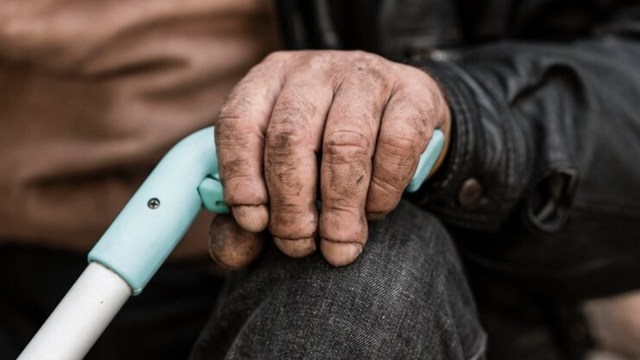📣 For more lifestyle news, click here to join our WhatsApp Channel and also follow us on Instagram
Why older adults remain highly vulnerable to diarrhoea, particularly in South Asia
This demographic, coupled with children under five, continues to account for the highest mortality rates worldwide
 Discover why South Asia’s elderly face high mortality from diarrhoeal diseases despite global progress. Learn about the risks, causes, and preventive measures. (Source: Freepik)
Discover why South Asia’s elderly face high mortality from diarrhoeal diseases despite global progress. Learn about the risks, causes, and preventive measures. (Source: Freepik)A recent study published in The Lancet Infectious Diseases revealed a stark reality: despite significant progress in reducing global deaths from diarrhoeal diseases, older adults remain highly vulnerable, particularly in South Asia.
This demographic, coupled with children under five, continues to account for the highest mortality rates worldwide.
The study, based on the comprehensive Global Burden of Disease (GBD) analysis conducted by the Institute for Health Metrics and Evaluation (IHME), highlighted that in 2021, diarrhoeal diseases caused 1.2 million deaths globally—a remarkable decrease from 2.9 million in 1990. However, the decline wasn’t evenly distributed across all demographics or regions.
- Elderly Vulnerability: Those aged 70 years and older in South Asia had the highest mortality rate globally, with 476 deaths per 100,000 population.
- Regional Disparities: High-income countries reported fewer than one death per 100,000 children under five, while sub-Saharan Africa recorded over 150 deaths per 100,000 in the same age group.
- Declining DALYs: The burden of diarrhoeal diseases, measured in Disability-Adjusted Life Years (DALYs), dropped from 186 million in 1990 to 59 million in 2021.
 In South Asia, factors like limited access to clean water, poor sanitation, and inadequate healthcare infrastructure exacerbate these risks. (Representational)
In South Asia, factors like limited access to clean water, poor sanitation, and inadequate healthcare infrastructure exacerbate these risks. (Representational)
Why older adults are at higher risk in South Asia
Dr. Manisha Arora, Director of Internal Medicine at CK Birla Hospital, Delhi, explains that older adults are particularly susceptible to immunosenescence, or the natural decline in immune function. This issue is further compounded by pre-existing conditions such as kidney disease or heart disease, which complicate hydration management during diarrhoeal episodes.
“Older adults often face a dilemma during diarrhoea,” says Dr Arora. “Conditions like heart failure may require limited fluid intake, yet hydration is critical during diarrhoeal episodes. This contradiction, combined with a reduced thirst mechanism and limited mobility, increases the risk of dehydration and its complications, including kidney failure and multi-organ failure.”
In South Asia, factors like limited access to clean water, poor sanitation, and inadequate healthcare infrastructure exacerbate these risks. Older adults often suffer from malnutrition, underlying health conditions, and social isolation, further elevating their vulnerability.
Tackling the crisis
To reduce mortality rates among the elderly, especially in vulnerable regions like South Asia, a multifaceted approach is essential, Dr Arora said:
- Improve Access to Clean Water and Sanitation: Safe drinking water and better hygiene practices can prevent diarrhoeal diseases.
- Strengthen Healthcare Infrastructure: Ensuring timely diagnosis and treatment is critical.
- Promote Vaccinations: Vaccines against pathogens like rotavirus can significantly reduce disease incidence.
- Education and Awareness: Programs highlighting the importance of hydration and early treatment can help caregivers and patients.
- Focus on Elderly Care: Targeted interventions like fluid and electrolyte replacement therapy and managing comorbidities are vital.
While global deaths from diarrhoeal diseases have seen a dramatic decline, the challenges faced by older adults, especially in South Asia, highlight the need for focused interventions. As Dr Arora points out, “Addressing dehydration, improving healthcare access, and promoting preventive measures are key to reducing mortality rates among the elderly.”
📣 For more lifestyle news, click here to join our WhatsApp Channel and also follow us on Instagram



- 01
- 02
- 03
- 04
- 05
























